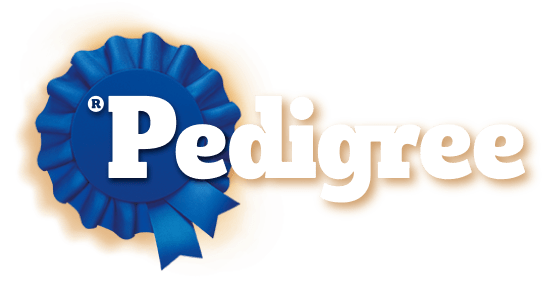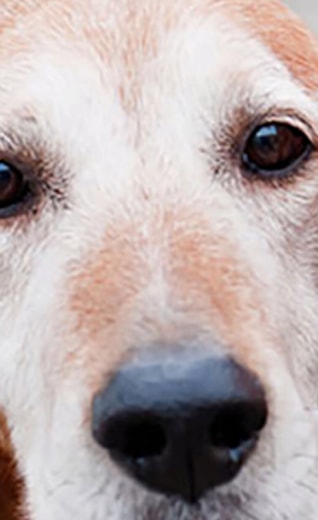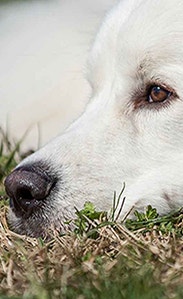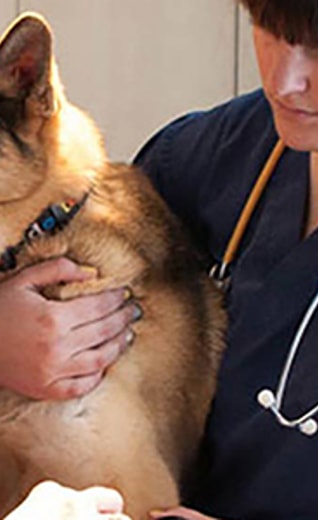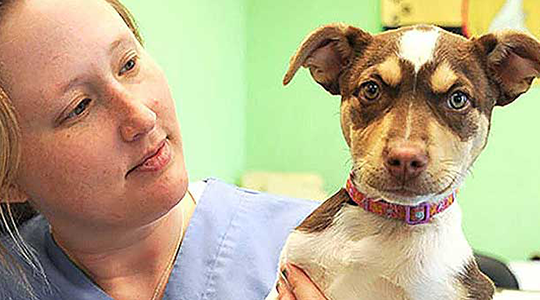
Caring For Dogs With Chronic Kidney Failure
Chronic kidney failure is a relatively common problem in dogs. Although it can occur in young dogs, it's more commonly seen in seniors. The more you know about this serious condition, the better off your dog may be.
How the kidneys function
When the body uses nutrients from food to produce energy, it also produces waste products. Blood containing these waste products, as well as water and minerals, flows to the kidney to be removed in the urine.
An important role of the kidney is to remove excess phosphorus from the blood. In the kidney, the blood is transported down a series of tubules called nephrons, where some of the water, and any useful nutrients, are re-absorbed from the tubules back into the bloodstream. The urine formed is then stored in the bladder until the dog urinates, when it flows to the outside through the urethra.
The proteins your dog eats as part of his diet are broken down into smaller units called amino acids, which are used by the body for growth, replacement of old cells, and regulation of body functions. In effect, they are the building blocks of protein. There are 20 different amino acids that can be re-assembled by the body into, for example, hormones, muscle tissue, and cell wall components. Amino acids that aren't needed are converted into urea, a waste product excreted by the kidneys in the dog's urine.
The kidney also plays a critical role in maintaining water balance and hydration in the body, by regulating the amount of water re-absorbed in the kidney tubules.
What is chronic kidney failure?
When the kidneys can no longer efficiently remove waste products, these accumulate in the blood and cause some of the clinical signs of kidney disease, such as poor appetite, weight loss, increased thirst, and vomiting. The kidneys also become unable to concentrate the urine, as they cannot re-absorb as much water back into the bloodstream. This leads to dehydration and more dilute urine being produced. Your dog then needs to urinate more frequently and during the night.
If your vet does a blood test on your dog, he or she will be looking for increased levels of waste products, especially urea, in the bloodstream.
There's a reason why, even though your dog may have suddenly started to show signs of kidney disease, we use the term 'chronic kidney failure.' This is because the loss of kidney tubule function will have progressed over a period of time, with the levels of waste products slowly increasing in the blood until they are high enough to produce the clinical signs of disease.
So, although you may not realize it, by the time your dog shows any signs of kidney failure, more than two thirds of his kidney tubules will have become damaged.
Dietary management of dogs with chronic kidney failure
While it's not possible to repair damage to the kidney tubules, you can help the remaining kidney tubules work more efficiently by feeding your dog the correct diet. This will help to reduce the clinical signs by preventing the accumulation of waste products in the blood; and it will help to slow down the progression of disease.
Feeding your dog a diet that's lower in protein than normal will help reduce the buildup of unwanted waste products such as urea. But it's important to not reduce the level of protein too much, or your dog won't get enough protein for cell replacement and body regulation.
You should also reduce the level of phosphorus in your dog's diet. Specially designed low-phosphorous diets are available from your vet. When the kidney is unable to remove phosphorus from the blood, a series of chemical processes leads to the loss of function of more kidney tubules.
Since dogs with kidney disease sometimes have poor appetites, they need to eat enough to stay at a normal weight; losing weight—particularly muscle tissue—can put added stress on their kidneys. An ideal diet will have a high concentration of calories, yet still be low in protein and phosphorus.
Looking after dogs with chronic kidney failure
Here are a few other ways you can help your dog that has chronic kidney failure:
- If your dog has been prescribed drugs, administer them exactly as advised.
- If your dog has been prescribed a low phosphorus diet, feed it to him exactly as advised. Avoid feeding extra snacks.
- Feed your dog small meals, often, rather than giving him one or two large meals in a day.
- Offer fresh food at each feeding.
- Make sure your dog always has access to clean, fresh water.
- Sometimes, dogs that have chronic kidney failure don't feel like eating. For them, it may help to warm food to just below body temperature, and to try hand feeding for the first few days of a new diet.
Chronic kidney failure is a very serious disease, so if you suspect that your senior dog has this condition get him to the veterinarian as soon as possible.
